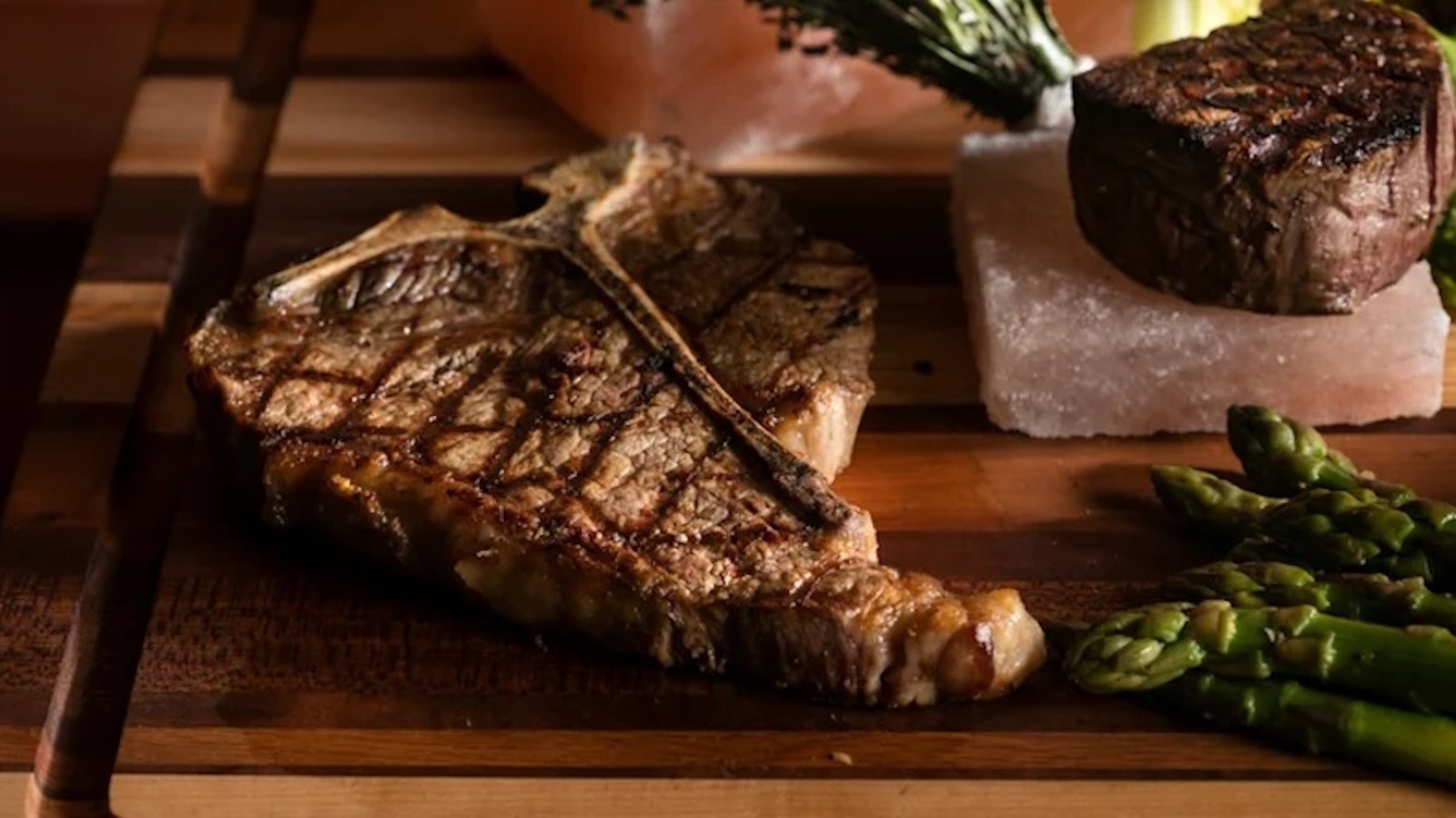
"The patent for David Burke Prime Steakhouse's dry aging process details the dimensions of a salt brick wall and the logistics of the enclosed space. The paperwork was first filed in 2009 by David Burke himself and outlines a timed cycle where salt racks and salt blocks are stacked in such a way that maximizes their surface area exposure with uncovered steaks as they are left to age. The longer the slabs of meat are kept in the room and moved closer to the salt rocks, the more complex the flavors of the protein pieces will become over time, resulting in profiles that are rich with layers of savory umami."
"The meat closet at David Burke Prime Steakhouse is lined specifically with pink Himalayan salt rocks that help beef age. While the salt is considered to have antibacterial properties, a timed set of UV lights helps maintain the sterile environment of the room. Along with absorbing flavor from the salt, the beef also becomes mouthwateringly tender as moisture is drawn out of the meat. Steaks are left aging until it is time to take the meat out of the room to cook."
David Burke Prime Steakhouse employs a patented dry-aging room lined with pink Himalayan salt bricks to influence beef flavor and texture. A patent filed in 2009 specifies salt brick wall dimensions and the logistics of an enclosed space and a timed cycle of stacked salt racks and blocks that maximize surface exposure of uncovered steaks as they age. Moving slabs closer to salt increases flavor complexity and umami. Salt contributes antibacterial properties while timed UV lights maintain sterility. Moisture is drawn from the meat, concentrating flavor and tenderizing the steaks. Guests can tour the dry-aging room and view a 35-foot, three-story wine tower holding over 15,000 bottles.
Read at Tasting Table
Unable to calculate read time
Collection
[
|
...
]